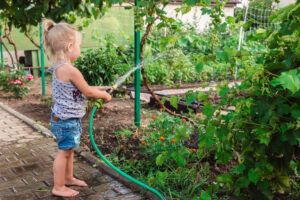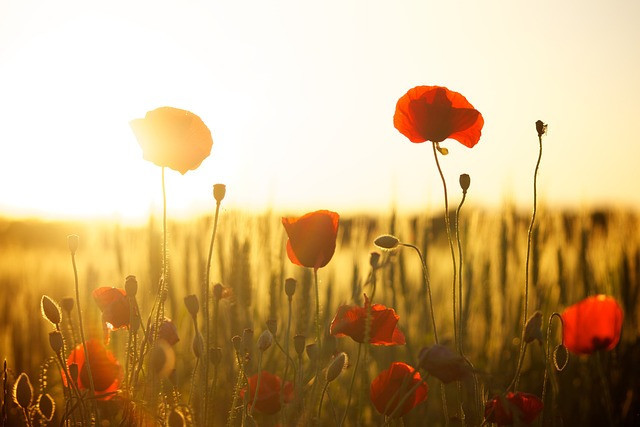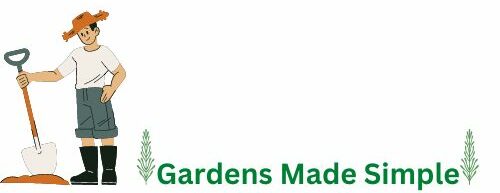
So, you’re planting a vegetable garden for the first time! There are many different types of gardens and knowing how to plan a vegetable garden is key. Home gardening tips for beginners show you the different gardens and containers you can use for a beautiful garden.
Let’s start by preparing for planting season, think about what type of garden you have in mind and the space to put it. Next, choose vegetables you want to plant, pick the perfect site for your garden, and always prepare before you plant.
While there’s no right or wrong way to make a vegetable garden, each of these things can help you plan a garden well-adapted to your climate. In Addition to the type of vegetable you want to plant it also brings different types of situations for your garden and your environment.
Here are some of the different types of gardens and what they can bring to the table beside vegetable or flowers, they are as followed:
Know the Different Type of Gardens You can Make!
- Vegetable Garden. It seems like everyone wants to grow a vegetable garden, it may be the most popular and practical type of garden. There are good reasons why, growing your own vegetables, you can save money and increase the number of fresh vegetables you eat while adding to a healthy diet.
- Flower Garden. A flower garden adds beauty to your yard, and it can be a relaxing escape for you. If you are mainly interested in beautifying your property, then a flower garden may be the best choice. You can plant perennials, annuals, or a mixed garden.
- Butterfly or Hummingbird Garden. This is a great idea for kids as well as grown-ups, a butterfly or hummingbird garden can be a great type of garden to plan. I’m not suggesting growing butterflies or hummingbirds would be a miracle in itself, but you can plant flowers that will attract them to your yard, like pollen-rich wildflowers, dill, fennel, and milkweed.
- Wildlife Garden. A wildlife garden is one that helps to support the animals in your area by providing them with sources of food and shelter. These are typically plants that are native to your area, so you would need to learn what your native species are to plan your garden.
You’ve Figured it out, and You’re Ready to Create a Thriving Garden.
Here’s a very good idea I learned while researching about planting a garden. I know firsthand that this is true because I fell into this very same trap. Pick two or three vegetables to start.
As new gardeners we often make the mistake of planting more than we can handle. I also, research some of the difficulties of growing the type of plants I wanted to grow. I wanted to make sure my choices are suitable for me as a beginner.
So as a beginner and this being your first season, I suggest you choose up to three plants that you’ve decided on putting in your garden. You can rotate out different plants between planting seasons.
- If you’re not sure what to plant check out gardening catalogs, use both magazines as well as the internet, this will help you if you’re struggling to think of a plant.
- Understand that plants don’t always produce the same way. Some plants produce all season long while others will produce only one time.
- Use beginner-friendly vegetables, like tomatoes, peppers, and squash they will continue to produce all season long and from what I researched they will produce very large yields. On the flipside, corn, carrots, and radishes will only produce once.
Consider How Much Space You Have Available.
One of the most important elements in starting a garden is space. This will determine what type of gardening you can have. Research how much space each of your plants will need. Tomatoes, for example, may need more space than peppers.
Depending on how much space you have available, choose how much each plant needs to grow. Make sure to leave enough space in your garden to walk around in it as well. You will need enough room to weed, water, and harvest your garden.
For example:
- If you have a lot of space, then planting a garden in the ground is no problem.
- Make sure to leave enough space in your garden to walk around in it as well.
- You will need enough room to weed, water, and harvest your garden.
- If you have limited space or simply do not want to plant in the ground, then you can also plant a garden in containers or Hydroponics Gardening.
- You can grow a variety of different plants in pots and keep them on a patio or in a sunny spot of your yard. I’ve seen how some plants even thrive in containers indoors, so using containers may also be ideal if you live in an apartment.
- If you live in an area with good soil that is not too rocky or sandy, then growing your garden in-ground is a good option.
- If growing your garden in-ground is not a viable choice, then consider buying or building a raised garden to grow your plants in. A raised garden bed is great because they are easier on your back and can be moved around your yard if desired. If you are going to use a raised garden bed, make sure it is large enough for the plants you want to grow and that they have good drainage.
- If you are limited on space, but still want to have your garden outside, then you can grow a Hydroponics Gardening System. These types of gardens use small planters or stacked crates and upright-growing plants.
Determine How Much Sun Your Plants Will Get.

What I’ve found from my research is that many plants require around 6 to 8 hours of full sunlight, then there are your full-sun loving plants and flowers like Prickly Pear Cactus, Wood Lily, Carolina Rose how thrive in the sun the more sunlight the better they grow.
- Sun to thrive. If you do not have an area that will provide this much sun, then you can still plant a garden. There are plants that grow well in less sunlight than others.
- To see these shade thriving plants or flowers, I provided a link to Amazon, so you can get a better idea of the type of plants that grow well in the shade.
- Next, look at the area where you plan to grow your garden and do this a few times per day on a sunny day to see how long the sun is shining in that particular area.
- Here’s how you could go about doing this check: start in the morning say around 7am, then check again at 11am, then 2pm, and last at 5pm, and make a note if the sun is shining on that area around those times.
- If the sun is shining on an area during three or four of your checks, then sun-loving plants will probably thrive there
Select veggies that are native or adaptable to your climate.
You don’t have to only grow plants that are native to your area, there are ways to get around it.
- Look for plants adapted to similar climates.
- Vegetables are sorted into two major types:
- “Warm season” here are some types of warm weather vegetables: beans, cantaloupes, cucumbers, okras, peppers, peas, sweet corn, tomatoes, and watermelons.
- “Cool season” here are some types of Cool weather vegetables: beets, broccoli, cauliflower, onions, potatoes, radishes, and turnips.
Warm season vegetables are planted and harvested from mid-spring to early summer, and cool season vegetables are planted and harvested from late summer to mid-autumn.
If your city is hot and humid, for example, buy plants that love humidity (or vice-versa if you live in a desert). Here are some examples of what I’m talking about.
- Let’s look at Tomatoes, they first started growing in South America but thrive in the similar climate of the Mediterranean.
- Here’s another big tip, avoid choosing rare or temperamental plants that will require more care than you can give.
We are not finish by far. but with the information in this article so far can start a beautiful garden. Because this is such a huge topic, I’ve broken it down into two parts. This way I will be able to give Basic Gardening Tips for Beginners more tips and examples, instead of cutting corners. So, look for part 2, soon.

Starting a garden and growing your own vegetables can be so much fun, but many people do not know the basics or where to start. These tips and ideas will help any budding gardener that wants to start their own veggie garden. I love your tip of checking for sun during different times of the day in the area where you plan on planting your veggies.
We are in the process of starting a vegetable garden and live quite close to the beach. This means we have very sandy soil. Would it be best to bring in a lot of compost or other soil to mix it? Or would it be better if we actually just built raised beds and put in the correct soil for a variety of veggies?
Or is it best to select veggies that are good to be grown in sandy soil, like carrots? Thank you for your advise.
Hello line Cowley, thanks for liking this article. Like you I live in aera where the soil isn’t the best desired place to grow a garden so I built two Raised Gardens. This way I have control of the soil mixture and it works out well for me. So a Raised Gardens would be a very good option for you.
I love keeping my environment green. And one of those ways I easily achieve it is maintaining my garden. I love your emphasis on selecting the right breed and maintain correct environmental factors for your garden. They are essential success factors for any garden and its owners. Good sunlight, easily accessible watering points and appropriate soil type is not negotiable
Hey Parameter, thanks for the comment. Our environment is important especially in these difficult times, when the environments need our help the most. I feel gardening is a way of giving back and the easier we make it for people, hopefully more people will start doing it. Thanks again.
Thanks for sharing such a very nice article. When it comes to the environment I find that it’s something that should be taken care of. So with that my family and I our all about gardening and how much fresh fruit and veggies are for the body. When it comes to gardening we sometimes have issues with the soil and planting correctly. Sometimes the sun or the weather isn’t right but we always seem to find a way so we can have our gardens. This was truly helpful so thanks.
Hello Kiersti, thank you for your comment. It is always a pleasure to hear others talk about the environment or gardening because those two things keep us alive, but like you said fresh fruit and veggies are good for the body. That’s one of the reasons I started a garden. Thanks again!
I have always been very interested in picking fruits from trees. I even planted a cucumber plant once and I felt very good when I harvested it. But where I live now, the weather is very dry, and we don’t have much space from where we live in the apartment. In your opinion, what plants can I grow in my apartment? What plants grow well in dry weather without much light?
Hi Liam, thanks for your comment. Yeah, space is a problem when starting a garden, but even living in an apartment you can still have a beautiful small garden. Type using hydroponic gardening or growing plants in containers. Tomatoes are sun loving plants, you can also enjoy growing herbs like thyme, basil, rosemary, sage, lavender and oregano. Here’s the thing, a vegetable garden doesn’t need to be huge. A lot of small gardens yield great rewards. Great question, and thanks again.